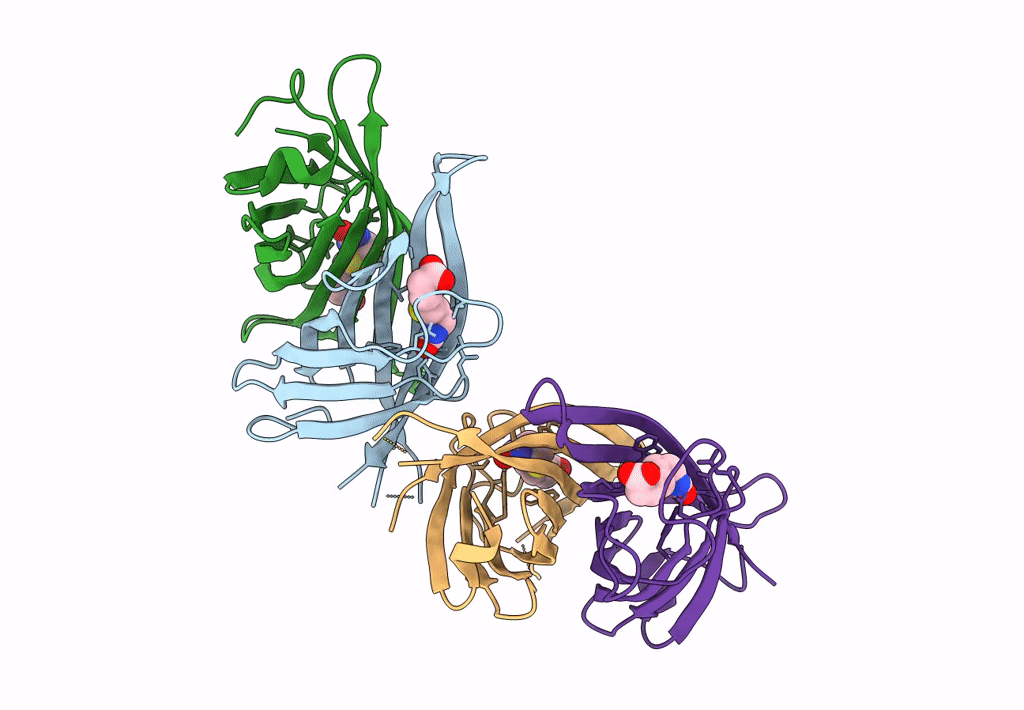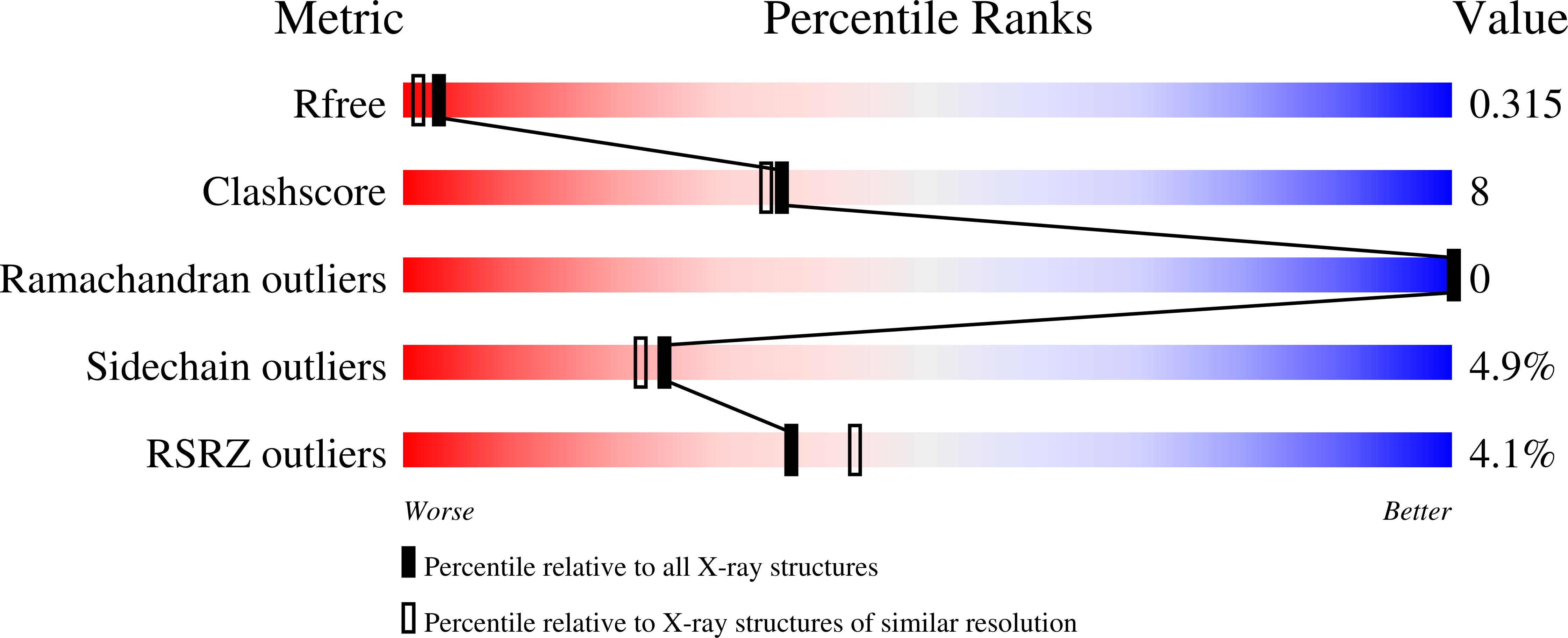
Deposition Date
2022-08-21
Release Date
2023-04-12
Last Version Date
2024-11-13
Entry Detail
PDB ID:
8ASS
Keywords:
Title:
The Crystal structure of F46Y mutant of the agroavidin-biotin complex
Biological Source:
Source Organism:
Rhizobium sp. AAP43 (Taxon ID: 1523420)
Host Organism:
Method Details:
Experimental Method:
Resolution:
2.12 Å
R-Value Free:
0.31
R-Value Work:
0.23
R-Value Observed:
0.24
Space Group:
P 21 21 2


